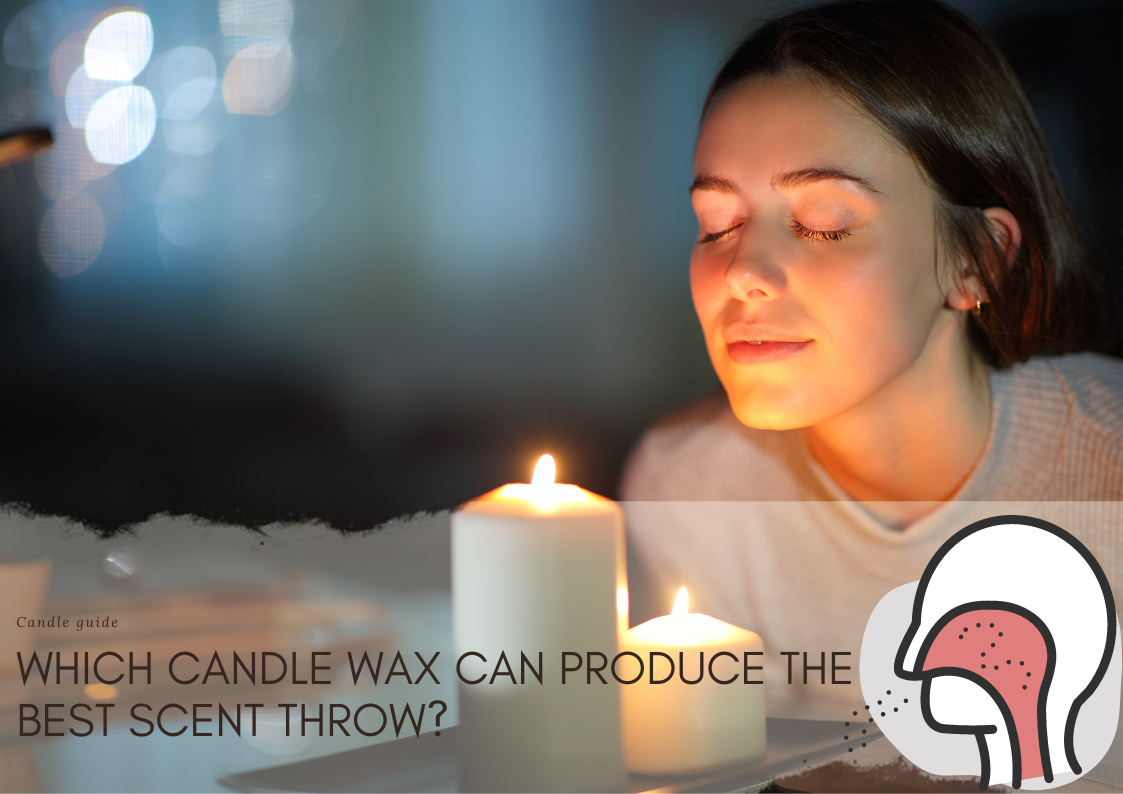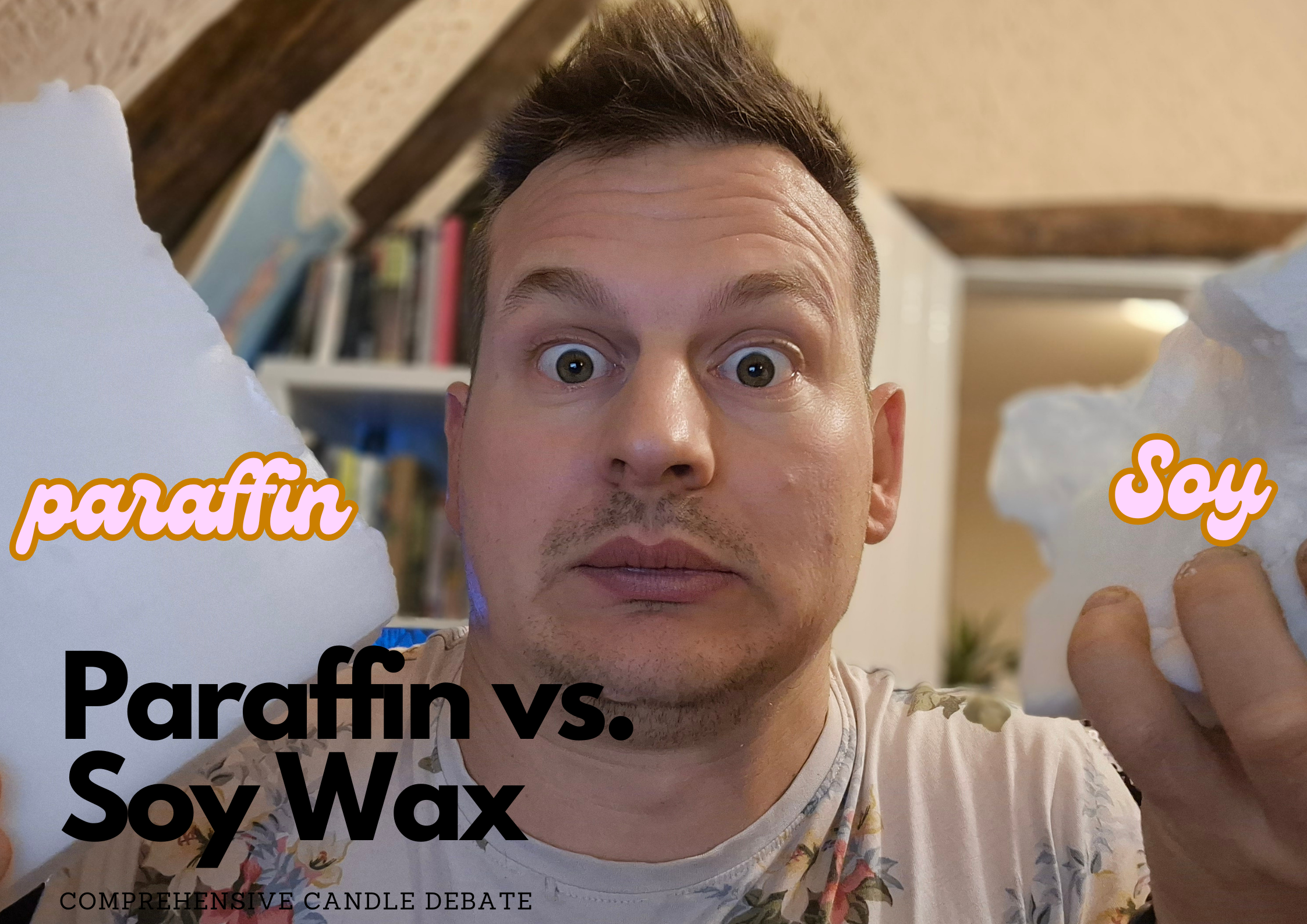Which candle wax can produce the best scent throw?
Sep 14 , 2022
Nowadays, there are hardly any candles on the market that are not scented with essential oils or fragrance oils, so it is quite likely that if you make a candle at home, you will also add some kind of fragrance. But which wax is best suited to disperse the scent evenly?
What determines the scent throw?
It may seem obvious that the quality and even more so the quantity of the added fragrance is the main determinant of a candle's scenic throw ability, but in reality it is far from being so simple. The fragrance does matter, but it's the quality of the wick, and more importantly the type of wax that really makes a difference.
Which is the best wax for making scented candles?

Paraffin
In the case of waxes, it is the burning temperature that should be taken into account when deciding which wax makes the best scented candle: the higher the melting point of a wax, (and therefore the hotter the candle burns), the greater the radius and the more evenly the scent of the burning candle will be felt.
If you want to choose a wax purely on the basis of scent throw, paraffin wax is still the best choice. This wax has the highest burn point of all the raw materials used in candle making, so it will give off the strongest scent. However, paraffin wax is not a natural material, and although its harmful effects on health have not yet been proven, there are more natural and healthier alternatives.
Beeswax
Although beeswax also has a high melting point, candles made from it are less able to evenly distribute the added fragrances, and as the wax itself is not odourless, such candles will always have a slightly honey scent.
Soy wax
The melting point of soy wax is relatively low, so when using this type of candle it will be less fragrant than the paraffin wax versions, but in return it will burn longer, so you can enjoy the slightly weaker fragrance for longer. In reality, candles made from soy wax also have enough scent throw to envelop a small room in a pleasant fragrance, so unless you want to smell the scent from a candle throughout your house, this natural alternative is an excellent solution.
The melting point of waxes made from other natural materials such as coconut oil are very low compared to paraffin wax, so candles made from these waxes cannot compete with paraffin.
Coconut wax
Coconut wax has an exceptional hot and cold throw, it has a low melting point which can cause issues when used in large chunks in candles. It is important to remember that when using coconut wax in candles, you should not use more than 10% coconut wax as it can cause your candle to burn too hot.
Coconut wax has a lower melting point than other types of wax, which means that it can release fragrance oils more readily. This makes it an ideal choice for candles that are meant to fill a room with scent. If you're looking for a natural wax that will give your candles a beautiful, glossy finish and strong scent throw, then coconut wax is your guy! It can be a bit tricky to work with at first, but once you get the hang of it you'll be churning out beautiful coconut wax candles in no time.
Rpeseed wax also has good scent retention, making it a good choice for candles and other scented products. Its melting point is also relatively low, which makes it easy to work with. I found the cold throw-on rapeseed wax a little low, but it had a decent hot throw.
Rapeseed wax
Rapeseed wax is also relatively inexpensive, making it a good choice for budget-conscious crafters. Overall, I found it to be a versatile and easy-to-use wax that performed well in a variety of applications.
Rapeseed wax is also known for its ability to hold colour well, making it a good choice for coloured candles and other products. My only issue with rapeseed wax was getting smooth tops, they cracked a lot, so I would recommend using a heat gun to get smooth tops.
As mentioned earlier, the scent throw of a candle is influenced by a number of factors, for example, it is important to let the candle cure when it is cooled down after pouring to ensure that the scent is evenly distributed throughout the wax.
So if the question is which wax makes the best scented candle the answer is paraffin, but if you take into account the properties of the wax other than the scent thrown, the decision is not so clear and is much more influenced personal taste.





